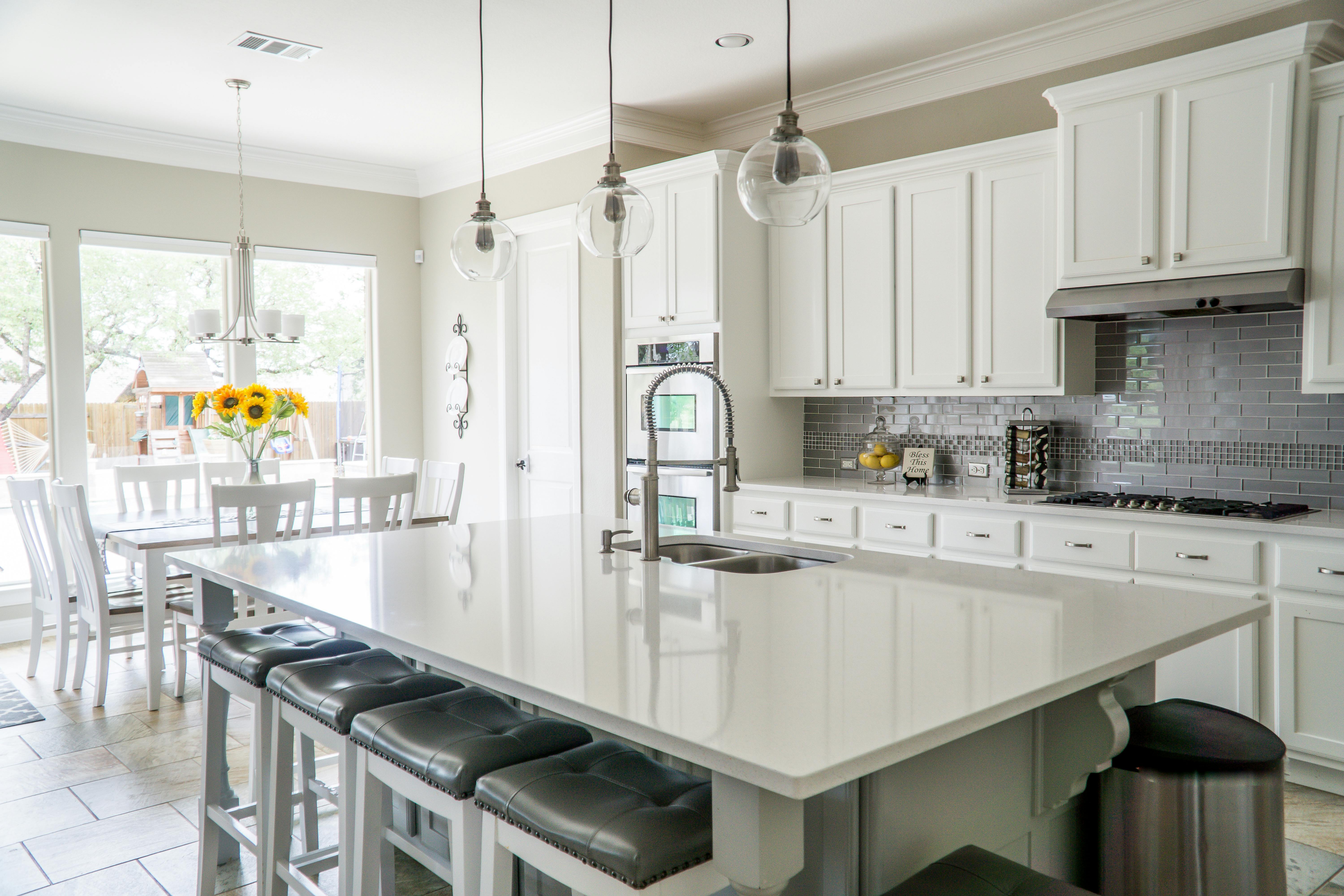7 Seller Tips to a Fast Sale
Many people in this situation find themselves needing a home that is more accessible, easier to maintain, or located closer to medical facilities and family support. But navigating the real estate market with specific medical needs can feel overwhelming.
This guide will help you understand the key factors in finding a home that fits your changing needs, from accessibility features to financial assistance programs. Whether you’re looking to modify your current home or find a new one that better suits your situation, this resource will provide clarity and direction.

1. Price It Right from the Start
Pricing your home correctly from the beginning is one of the most crucial factors in achieving a fast sale. Many sellers assume they should start with a high price and lower it if needed, but this can actually backfire. An overpriced home can sit on the market, becoming stale and less attractive to buyers. Buyers today are well-informed and often have access to market data, so they can quickly recognize when a home is overpriced. Setting the right price from the start can generate strong interest and even multiple offers, driving up the final sale price.
One of the best ways to determine an accurate listing price is by analyzing recent comparable sales in your area. It's also important to consider the current market conditions—whether it's a buyer’s market or a seller’s market. Working with a real estate professional can help you assess the competition and strategically price your home for a quick and profitable sale.
Analyze recent comparable sales in your area.
Consider current market conditions (buyer’s vs. seller’s market).
Utilize our Home Valuation Tool to get an estimate of your home's worth.
Work with an experienced real estate agent to determine a competitive, strategic price.
For a deeper dive into buyer psychology and how pricing impacts their perception, check out The Psychology of Pricing: How to Tap into Buyer Perceptions.

2. Stage Your Home to Impress
Buyers make snap judgments about homes, often within the first few seconds of stepping inside. Staging your home effectively can make a significant difference in how quickly it sells and at what price. A well-staged home allows potential buyers to envision themselves living there, making them more likely to make an offer. Even small changes, such as rearranging furniture and adding decorative touches, can create a welcoming atmosphere.
Start by decluttering and depersonalizing your home. Remove excess furniture, personal photographs, and other items that could distract buyers from seeing the true potential of the space. Enhancing curb appeal is also crucial—your home’s exterior is the first thing buyers see, so make sure it looks inviting with fresh landscaping, a clean entryway, and a well-maintained facade. Inside, open curtains and blinds to let in natural light, use neutral colors to create a universally appealing space, and arrange furniture to highlight the best features of each room.
Declutter & Depersonalize – Remove excess items and personal photographs.
Enhance Curb Appeal – First impressions matter. Ensure your lawn, landscaping, and entryway are inviting.
Let in Natural Light – Open blinds and curtains to make rooms feel bigger and brighter.
Neutral Colors & Minimal Decor – Appeal to the widest range of buyers by using neutral tones.
Highlight Key Features – Arrange furniture and decor to showcase your home’s best attributes.
Learn more about maximizing your home’s appeal with Unlocking Maximum Value from Your Home Sale.

3. Capture High-Quality Listing Photos & Videos
In today’s digital world, the first impression most buyers get of your home comes from online listings. High-quality photos and videos are essential to attracting potential buyers and generating interest. Listings with professional-quality images receive significantly more views and engagement than those with poor-quality or amateur photos. If your listing photos don’t do your home justice, buyers may scroll past without ever scheduling a showing.
Hiring a professional real estate photographer is one of the best investments you can make when selling your home. They know how to capture your home’s best features using natural lighting and strategic angles. Wide-angle shots can make spaces appear larger, and properly staged rooms will look inviting. Additionally, consider incorporating video tours or 3D walkthroughs to appeal to remote buyers who may not be able to visit in person.
Hire a professional real estate photographer.
Use natural lighting whenever possible.
Take wide-angle shots to make spaces appear larger.
Include key rooms such as the kitchen, living area, master bedroom, and bathrooms.
Consider video tours or 3D walkthroughs to attract remote buyers.
For more tips on how professional images enhance your home’s marketability, read Light It Up: How Professional Images Highlight Your Home’s Best Features.

4. Market Aggressively Across Multiple Channels
An effective marketing strategy is key to selling your home quickly. Simply listing your property on the MLS isn’t enough—you need to actively promote it across multiple channels to reach the right buyers. The more exposure your home gets, the faster it will sell.
Utilizing social media platforms like Facebook and Instagram can significantly increase visibility. Targeted advertising and posts in local real estate groups can generate interest quickly. Email marketing campaigns, open houses, and virtual tours also play an important role in getting your home in front of potential buyers. Additionally, an experienced real estate agent can tap into their professional network to find interested buyers and generate leads.
Leverage Social Media – Promote your listing on Facebook, Instagram, and local community groups.
Email Marketing – Reach out to local buyer leads and agents.
Open Houses & Virtual Tours – Provide easy access for buyers to view your home.
Paid Advertising – Facebook and Google Ads can put your home in front of more qualified buyers.
Real Estate Networks – An experienced agent will tap into their buyer network to drive interest.
Learn more about how a strong online listing can help you sell faster: How a Strong Online Listing Can Sell Your Home Faster.

5. Be Flexible with Showings
The more accessible your home is, the faster it will sell. Many buyers have tight schedules and need flexibility when scheduling showings. If they can’t see your home on their preferred timeline, they may move on to other options.
Being ready for last-minute showing requests and keeping your home in show-ready condition at all times can help you attract serious buyers. Consider temporary accommodations if frequent showings disrupt your daily routine, and offer virtual tours for buyers who cannot visit in person.
Be ready for last-minute showing requests.
Keep your home clean and tidy at all times.
Consider temporary accommodations if frequent showings disrupt your daily life.
Offer virtual showings for remote buyers.
For more on managing showings, offers, and beyond, check out Putting Your Home on the Market: Showings, Offers & Beyond.

6. Understand Buyer Motivations & Negotiate Smartly
Every buyer has different motivations, and understanding them can give you a strong advantage in negotiations. Some buyers are looking for a move-in-ready home, while others may be seeking a deal on a fixer-upper. Recognizing these motivations can help you position your home effectively and respond to offers in a way that leads to a faster sale.
First-time homebuyers, for example, may be more focused on affordability and might request concessions such as covering closing costs. Move-up buyers may be looking for specific upgrades and larger spaces, while downsizers may prioritize convenience and low maintenance. Investors are typically looking for the best return on their investment, meaning they are value-driven and may negotiate aggressively.
When negotiating, keep in mind:\n
- Know Your Buyer Types – Tailor your approach based on whether the buyer is a first-time buyer, move-up buyer, downsizer, investor, or relocating buyer.\n
- Be Strategic with Counteroffers – Avoid rejecting offers outright; instead, counter strategically to keep the conversation going.\n
- Offer Incentives If Needed – Closing cost assistance, home warranties, or flexible closing dates can be attractive to buyers.\n
- Stay Focused on Your Bottom Line – Understand your must-haves and where you’re willing to compromise.\n
For a detailed breakdown of buyer types, check out The Seller’s Playbook for the 5 Types of Buyers.

7. Prepare for a Smooth Closing Process
A fast sale doesn’t just mean getting an offer—it also means ensuring the closing process goes smoothly and efficiently. Delays during closing can frustrate buyers and even lead to deals falling through, so it’s important to anticipate potential roadblocks before they arise.
Start by addressing potential repairs in advance. Many home sales are contingent on a successful inspection, so a pre-listing inspection can help you identify and resolve any major issues before putting your home on the market. Staying organized with necessary paperwork, such as property records and disclosures, can also prevent unnecessary hold-ups.
Additionally, be proactive about the buyer’s financing process. Ensuring the buyer has a solid pre-approval and working closely with their lender can keep things moving quickly. Finally, planning your own move in advance will help avoid any last-minute disruptions.
Key steps for a smooth closing:\n
- Address Repairs in Advance – Consider a pre-listing inspection to identify potential issues before they arise.\n
- Stay on Top of Paperwork – Work closely with your real estate agent and title company to ensure all necessary documents are in order.\n
- Be Proactive with the Buyer’s Lender – Ensure the buyer’s financing is solid and that there are no unexpected obstacles.\n
- Plan Your Move Early – Having a clear moving timeline can prevent unnecessary stress as you approach closing day.\n
If you’re wondering whether you’re fully prepared to sell, check out 6 Questions to Ask Before You Sell Your Home.

Ready to Sell Your Home Quickly & Profitably?
Selling your home doesn’t have to be a drawn-out, stressful process. By following these seven expert tips, you’ll be well-positioned to attract buyers quickly, negotiate effectively, and close with confidence.
If you're considering selling, start by using our Home Valuation Tool to get an estimate of your home’s worth. For a personalized selling strategy, reach out to our team today!


